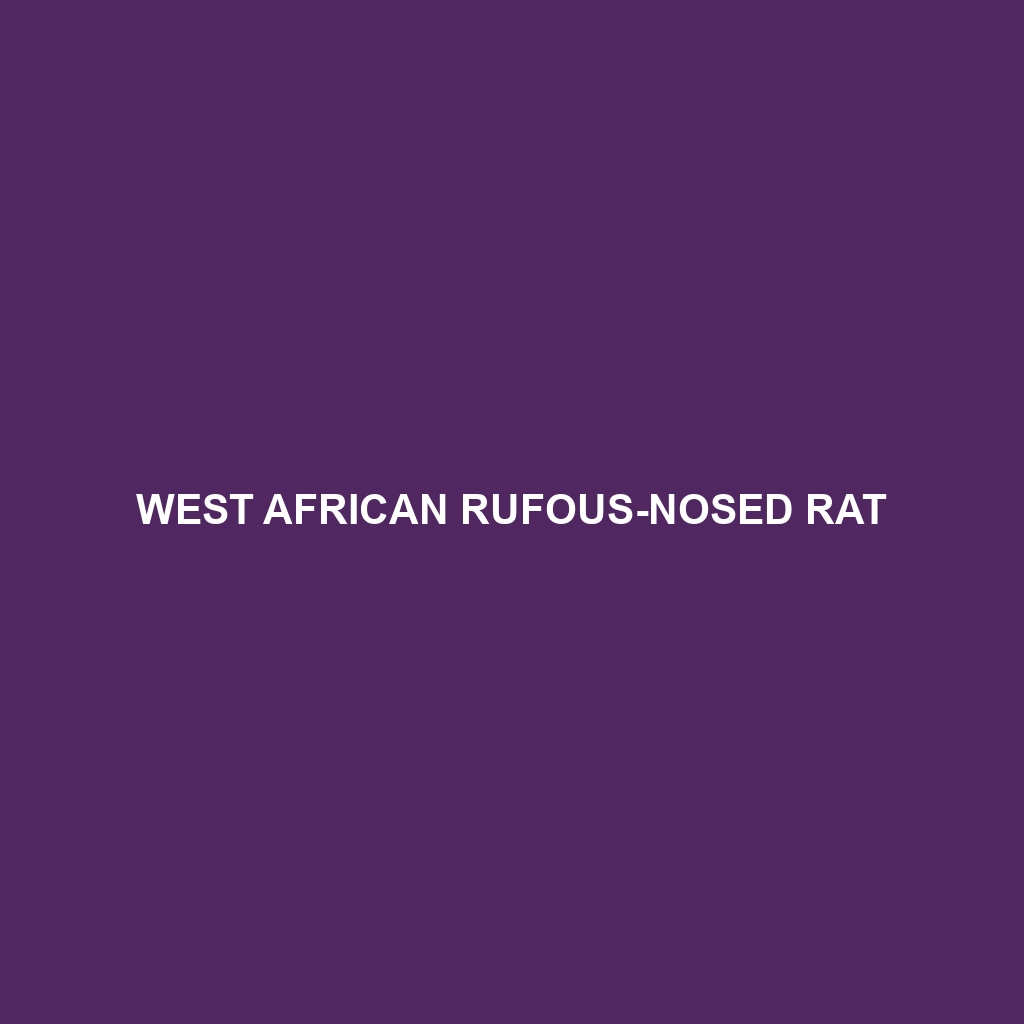West African Rufous-nosed Rat
Common Name: West African Rufous-nosed Rat
Scientific Name:
Habitat
The West African Rufous-nosed Rat primarily inhabits the lush forests and savannas of West Africa, notably in countries like Ghana, Ivory Coast, and Nigeria. This species thrives in environments with dense vegetation, where it can find shelter and food. These habitats provide the necessary conditions for their survival, including moisture and cover from predators.
Physical Characteristics
Measuring approximately 25 to 30 centimeters in length, the West African Rufous-nosed Rat features a distinctive reddish-brown fur coat that gives it its name. Its body is elongated, with a long, hairless tail that aids in balance and agility. The rat has large ears and prominent whiskers, which enhance its sensory perception, making it well-adapted to its forested habitat.
Behavior
This species is primarily nocturnal, foraging for food under the cover of darkness. They are known for their strong social structures, often living in small groups. A unique aspect of the West African Rufous-nosed Rat’s behavior is its ability to communicate through a series of high-pitched vocalizations, which facilitate coordination within the group while foraging or evading predators.
Diet
The diet of the West African Rufous-nosed Rat is diverse, consisting mainly of seeds, fruits, and roots. They are adept foragers and will also consume small insects and other invertebrates, showcasing their opportunistic feeding habits. This varied diet plays a vital role in seed dispersion within their ecosystem as they contribute to plant propagation.
Reproduction
Breeding typically occurs during the warm, rainy season, which provides abundant resources for raising young. Female West African Rufous-nosed Rats give birth to litters of typically 3 to 5 offspring after a gestation period of around 21 to 25 days. The juveniles are born hairless and blind, relying entirely on their mother for nourishment and protection during the initial weeks of life.
Conservation Status
The West African Rufous-nosed Rat is currently listed as vulnerable due to habitat loss from deforestation and human encroachment. Conservation efforts are essential to maintain their populations and protect their natural habitats, as these actions are critical for their long-term survival.
Interesting Facts
One fascinating fact about the West African Rufous-nosed Rat is its exceptional olfactory abilities, which allow it to locate food sources buried deep within the forest floor. Additionally, they play a significant role in their ecosystem by controlling insect populations and aiding in plant growth through seed dispersal.
Role in Ecosystem
West African Rufous-nosed Rats are integral to their ecosystem, serving as both prey and predators. They help maintain ecological balance by participating in seed dispersion and serving as a food source for larger predators. Their behaviors contribute to a healthy, functioning ecosystem in the forests of West Africa.
